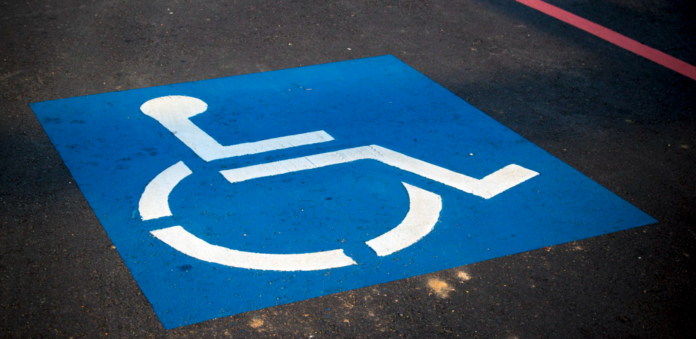Digital signage can reach the consumer through visual and audio content. Designing and combining them with care can be of tremendous use to individuals with disabilities and sensory issues. Below we’ll cover simple yet highly useful ways in which you can elevate digital signage accessibility to help disabled individuals and ensure their experience is as high as it can be throughout your establishment.
Visual and auditory accessibility
For an older demographic and visually impaired customers, adjust font sizes so they’re easier to read. It also helps to write concise and short messages that deliver information more easily. Bonus points if you add an auditory component to the content.
Combining both audio and video content together is a good match, especially for important information. Do note, however, that audio and video should never mutually depend on one another to deliver a message. Both should be capable of standing on their own as you never know what the conditions around the display might be.
Interactive touchscreens
Interactivity is a phenomenal way to ensure digital signage accessibility. It can be tough to adapt every bit of your content for this purpose when only a few in your target audience require it. Instead, make such content appear on-demand!
For important campaigns such as sales data, wayfinding, or emergency information, let users interact with the digital signage in front of them to make the message bigger, play audio, or access specific information they’re looking for. Below we cover instances where this feature can be useful.
Of course, consider display accessibility. Make sure consumers can easily interact with the display without excessive steps. A simple button press or even remote interaction over their smartphones are a good start!
Wayfinding and accessibility information
Consider which information disabled individuals may need the most and make it accessible on-demand. For people with lowered mobility, set up a wayfinding display that shows most direct routes with accessible paths. Pinpoint elevator locations, seating areas, assistance desks, as well as information on restroom accessibility.
Making this on-demand feature available is really useful in the long run. Even if people don’t have disabilities, they’ll remember this bit of information if someone in their family or friend group might find it useful.
Transport information
Information on nearby bus or train schedules is useful for everyone, particularly for individuals with limited mobility. Accurate arrival times are a must, in particular when some people need slightly longer to get there. Furthermore, if the information is available to you, also include data on seating availability, wheelchair accessible transportation, as well as other alternatives of transportation that may exist in your area.
To take digital signage accessibility to the maximum, consider even making this information available on-demand in audio form.
Emergency notifications
In the event of an emergency, people with disabilities are more vulnerable than anyone. Given that digital signage can deliver information through sight and sound, build emergency campaigns that check both of these boxes. Design a short and direct message with big letters, accompanied by an audio instruction.
In case of an emergency evacuation, set up each display to notify people of the nearest exit. This is one example where digital signage designed with the disabled individuals in mind truly makes a difference. In these moments when there’s a lot of noise and movement, panic quickly takes hold. Immediate and clear communication can help calm it down.
Event information
If you’re organizing an event that will experience greater foot traffic, list all types and means of accommodation you offer to disabled individuals on your digital signage. This information doesn’t need to take up the majority of your display. Instead, include a QR-code that can be scanned for more details on everything else mentioned above. A good practice is to include this same QR-code in your marketing material. Here’s why.
Access to this information doesn’t need to necessarily be designed for the disabled individuals themselves. It simply spreads the knowledge that the event welcomes all, thus letting people who see the information know that they can invite others without stress that the event will be inaccessible to them. Take it to another level and feature other events which also cater to people with disabilities, as well as events that may be comfortable to people with sensory issues. This builds a stronger connection to the audience, letting them know that their needs are considered.
Build sensory-friendly content
For any individuals who may struggle with sensory issues, design content less aggressive in its delivery of information. Since we mentioned interactivity, you could allow users to immediately adapt the content on the display to be calmer. When you perceive there is a larger audience requiring such a feature, design content being less stimulating. Avoid using audio, and make the display less animated.
You may also designate certain hours of the day for when this happens automatically. We can see one example of such a use in Walmart. Just a few months back, they announced their sensory-friendly shopping hours, running every day from 8-10AM. During this time, displays become a static image, lights are lowered, and the radio is turned off. If you think this may be unnecessary, keep in mind that an estimated 1 in 20 people in the US have sensory issues.
Adapt content as needed
To wrap things up, it all boils down to knowing and understanding your audience. In some places, the needs of the audience are obvious. For instance, in homes for the elderly, you’ll want to make data more visually accessible by making fonts bigger and slowing down content rotations. You’d also want to include information for visitors on where they can go on a nice walk, and which areas are wheelchair-accessible. These are just some of the few ways to being raising digital signage accessibility so it’s useful and welcoming for everyone.
Furthermore, if you can predict the times of day or week when specially designed content is needed, simply schedule it through digital signage software. You may even want to schedule them to repeat on the same schedule. As with the Walmart example, if people can anticipate when the environment is adapted to their needs, they will become returning customers then and there. Try out OnSign TV and start building your content!
Cover image by AbsolutVision.








